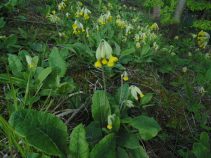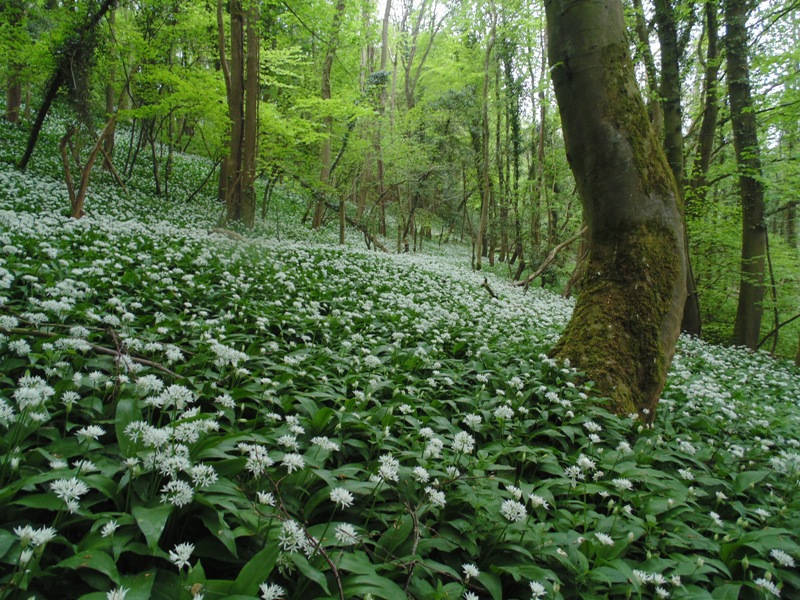When you think of a quarry we bet you wouldn’t picture this photo, but many quarry sites have beautiful woodland edges. In a wildlife calendar – April/early May is the time to spot woodland ground Flora. Woodland plants have evolved with deciduous trees over thousands of years, to flower and grow when they have most access to light; i.e. before the trees are in full leaf.
 Woodland form parts of the boundaries on a number of CEMEX sites and we monitor these woodlands to keep them in good condition. This stunning blanket of white flowers are Ramsons, also commonly known as Wild Garlic, from its pungent smell at Newbridge quarry.
Woodland form parts of the boundaries on a number of CEMEX sites and we monitor these woodlands to keep them in good condition. This stunning blanket of white flowers are Ramsons, also commonly known as Wild Garlic, from its pungent smell at Newbridge quarry.
Ramsons generally grows in damp areas within the woodland, but Newbridge also has a Cowslips and Primroses. When in woodland these flowers are the foodplant of a very rare butterfly – The Duke of Burgundy – whose home is in the adjacent woodland. In time its hoped that the restoration at the quarry could also support this butterfly, so we watch and wait.
Everyone knows of Bluebells and they are found in abundance at Cragmill quarry. However, not many people know that it takes a Bluebell seven years to grow from seed to its first flower, one of the many reasons why they are protected by law. Many woodland plants are slow growing and need the stable environment of native Deciduous trees. Woodland habitats take centuries to grow and develop.
CEMEX and RSPB have developed joint guidance on the creation and management of woodlands for this very reason, so that when quarries are restored they get to opportunity over time, to develop, into these wonderful habitats rich in Flora and Fauna.
